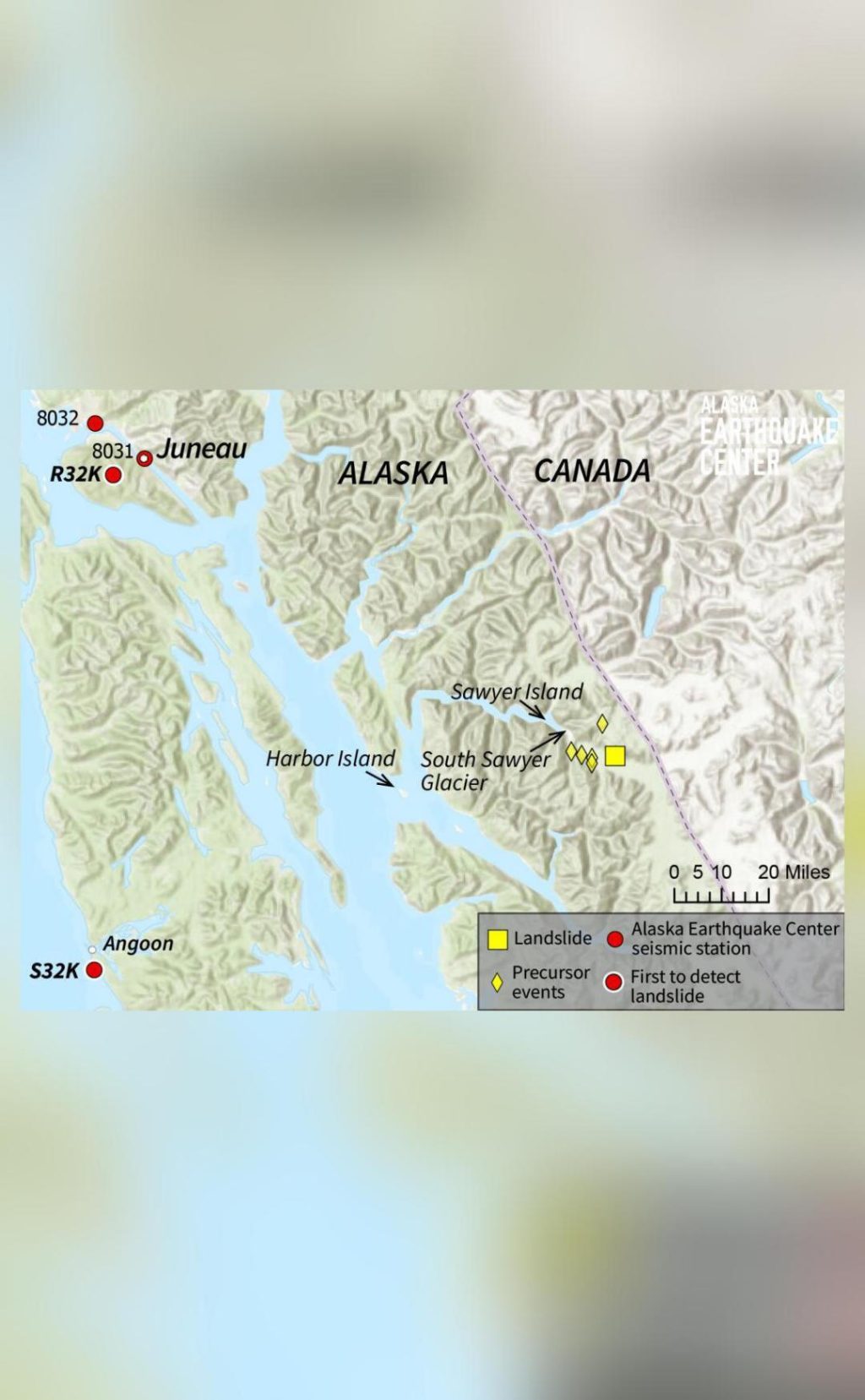
100-foot Tsunami Strikes Alaska after Rock as Big as 40,000 Olympic-sized Pools Crashes
A catastrophic event has struck the remote fjords of Alaska, sending shockwaves around the globe. A massive rockslide, estimated to be as large as 40,000 Olympic-sized swimming pools, crashed into the sea, triggering a 100-foot tsunami that ravaged the Sawyer Island’s rocky slopes. The event went unreported until three kayakers on Harbor Island were awakened to waves crashing just inches from their camp.
The incident occurred in a remote area of the southeastern Alaska fjord, making it difficult to assess the full extent of the damage. However, eyewitness accounts and aerial footage have provided a glimpse into the sheer scale of the disaster.
According to reports, the massive rockslide occurred on August 18, 2023, at approximately 1:00 AM local time. The rockslide, estimated to be around 40,000 Olympic-sized swimming pools in size, tumbled down the mountainous terrain and crashed into the sea. The impact created a massive amount of energy, which was released as a 100-foot tsunami.
The tsunami’s sheer power was evident as it scraped trees off the rocky slopes of Sawyer Island. The waves were so powerful that they were able to uproot trees and send them tumbling down the slopes. The remote location of the event meant that it went unreported until three kayakers on Harbor Island were awoken to the crashing waves.
The kayakers, who were camping on the island, described the scene as “apocalyptic” as they watched the waves crash just inches from their camp. They reported that the waves were so powerful that they were able to knock over their campsite and send gear tumbling down the beach.
“It was like nothing I’ve ever seen before,” said one of the kayakers. “The waves were so powerful that they were able to uproot trees and send them crashing down the slopes. It was like the end of the world.”
The remote location of the event meant that it took several days for the news to reach the outside world. The Alaska Earthquake Center, which monitors seismic activity in the region, was the first to report on the event.
“The massive rockslide and subsequent tsunami were a significant event,” said Dr. David A. Yuen, a seismologist with the Alaska Earthquake Center. “The sheer scale of the rockslide and the resulting tsunami is a reminder of the power of geological forces in our region.”
The event has raised concerns about the potential for similar events in the future. The region is prone to earthquakes and landslides, and experts warn that similar events could occur in the future.
“This event is a reminder of the importance of monitoring seismic activity in our region,” said Dr. Yuen. “We need to be prepared for these types of events and work to mitigate their impact on our communities.”
The event has also raised concerns about the potential for tsunamis in the region. The Alaska Tsunami Warning System is designed to detect and alert communities to potential tsunamis, but experts warn that the system is not foolproof.
“While the Alaska Tsunami Warning System is an important tool, it is not infallible,” said Dr. Yuen. “We need to continue to improve the system and work to ensure that our communities are prepared for potential tsunamis.”
As the region begins to recover from the event, experts are working to assess the full extent of the damage. The event serves as a reminder of the power of geological forces in our region and the importance of monitoring seismic activity and preparing for potential disasters.
Source:
https://earthquake.alaska.edu/major-landslide-southeast-alaska-fjord






